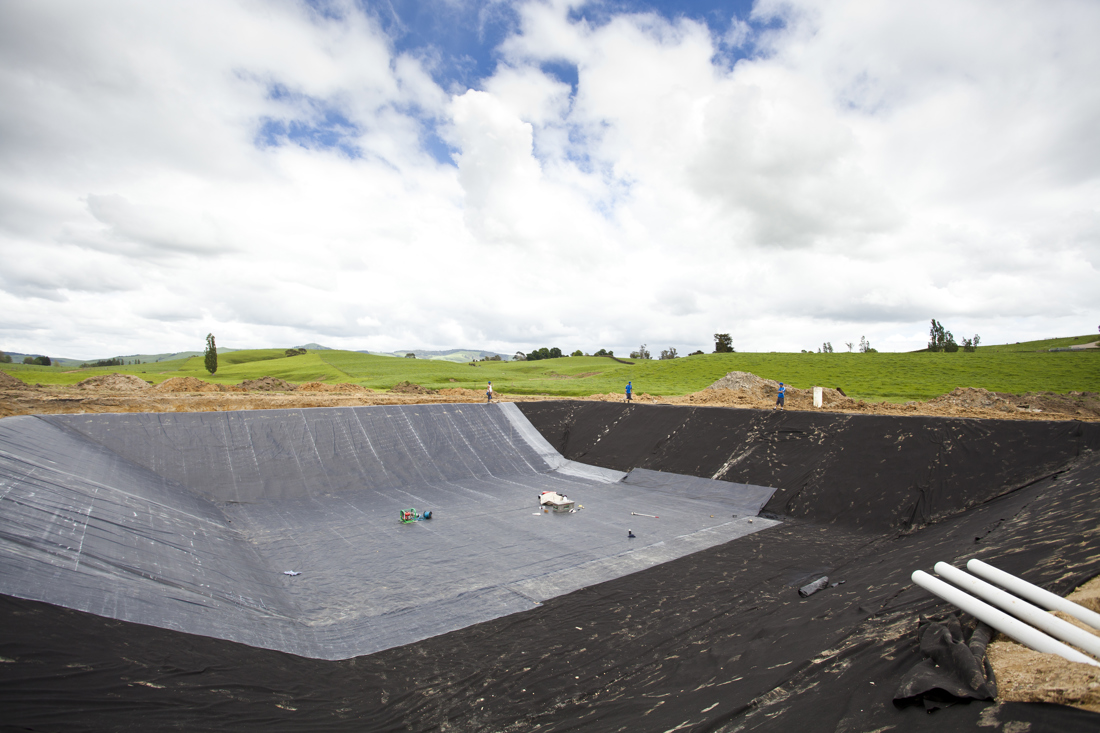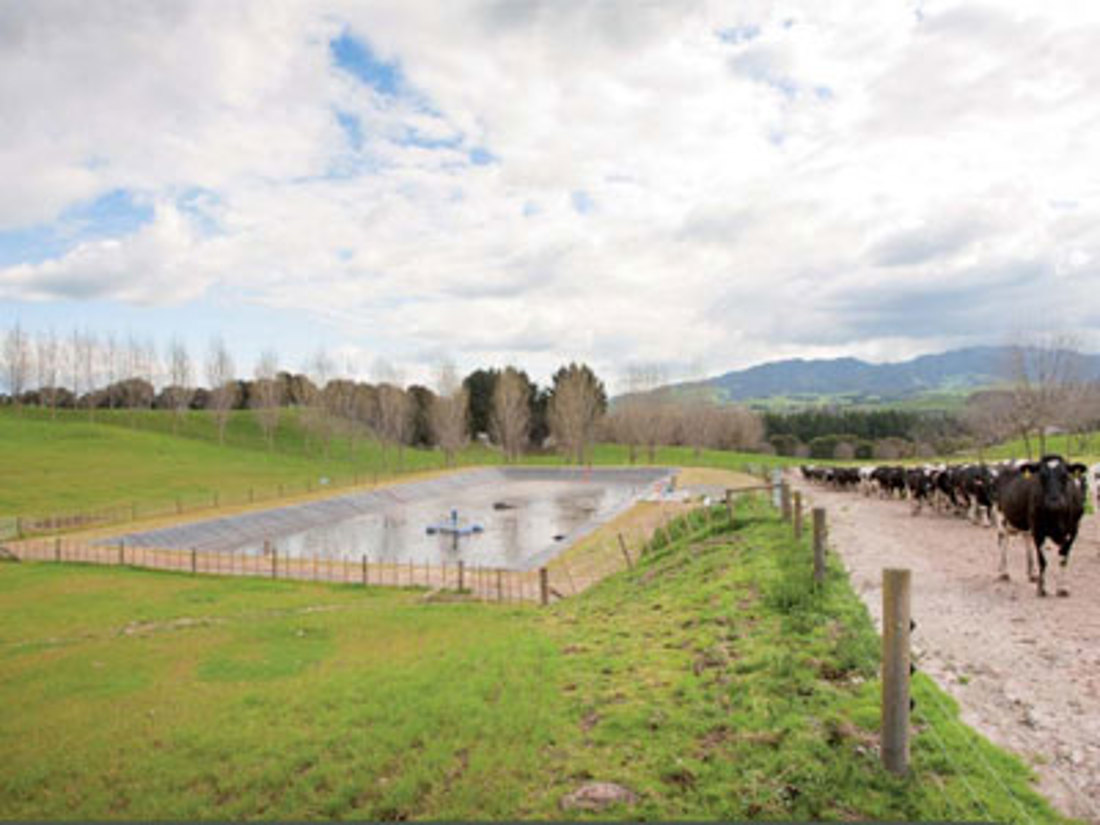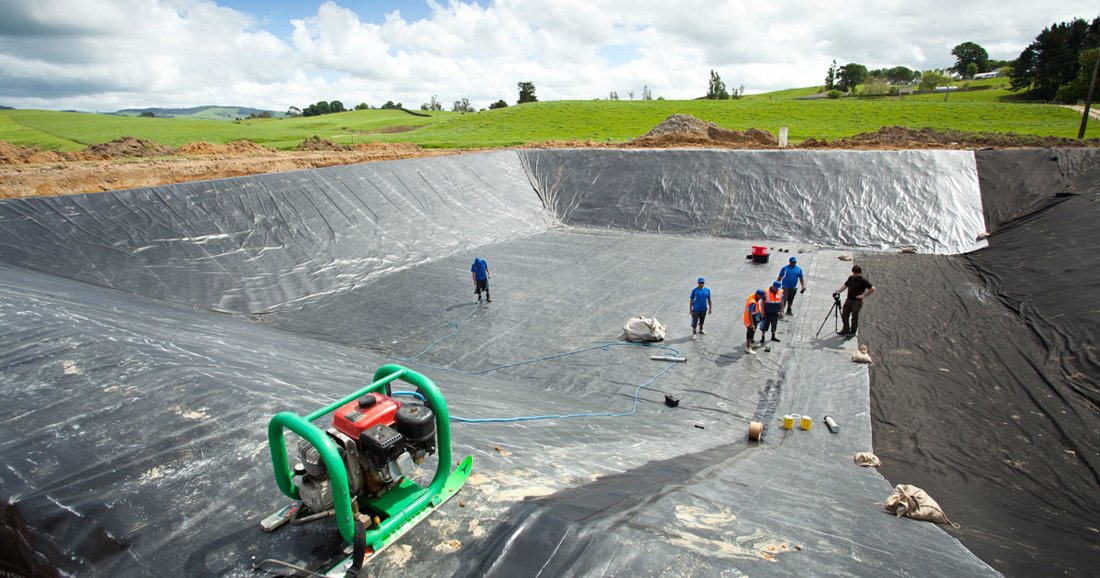Odour from farm dairy effluent is increasingly an issue as herd sizes grow and urban boundaries get closer to operating farms. Odour issues can also be a regional council compliance concern and management of odour is often referred to in effluent consents.
Sources of odour include ponds, tanks, solids separation systems, sludge piles, feed pads, and silage stacks. Effluent application, the desludging of ponds and muck spreading operations also release odour.
If the regional council receives a complaint about an odour, the council will come out to your farm and assess the situation. Infringement /abatement notices may be a potential consequence.
Identifying the odour issue and source
If a neighbour complains about an objectionable odour or you notice some issues yourself you must investigate further. This is not generally a problem that disappears quickly. Often the main culprit is the effluent storage pond although it does pay to check that there’s not a problem with effluent stored in the main lines.
If you’re satisfied that the issue is the storage pond itself, try and diagnose the type of smell using the table below.
| Compound | Description |
| Hydrogen Sulphide | rotten eggs |
| Methyl Mercaptan | decayed cabbage, garlic |
| Ethyl Mercaptan | decayed cabbage |
| Dimethyl Sulphide | decayed vegetables |
| Ammonia | sharp, pungent |
| Volatile organic compounds | varies between compounds - solved type/putrid/sickly |
You can also tell a lot about a pond from its colour:
Green: A green-looking pond is usually in good condition and should not produce any objectionable odour, apart from very occasional episodes. If there is however a green scum on the surface then this is likely to be blue-green algae and this may increase in population and then die off suddenly releasing toxins and odour.
Black-Greyish: A black–greyish pond can be a sign of a high sludge level and highly concentrated effluent in the pond causing anaerobic activity.
Pink: A pink pond that is bubbling is a sign of the establishment of purple sulphur bacteria (PSB). PSB mitigate odour release by using sulphur to respire thereby reducing the amount of hydrogen sulphide produced. Such a pond is most likely recovering from an odorous period so there should be little odour from a light pink pond.
White/Milk: This colour is likely to be due to an increased anaerobic activity as the water temperature rises. The release of sulphide and hydrolysis products is likely to turn the water milky and smelly.
Blue-Greenish: This colour is likely to be caused by an excessive proliferation of cyanobacteria. This will lead to the release of bad smells and the production of toxins in the water. Cyanobacteria may bloom with warm temperatures and high nutrient levels. It is a sign that the pond is receiving a high organic loading. Treatments include aeration/mixing, hydrogen peroxide, and possibly algaecides. Expert advice from a wastewater treatment engineer may be needed if this is occurring in the pond.
What is causing the pond to smell?
Odours from ponds are caused by a mixture of gases. The type of pond and the way the pond is operated and maintained impact odour production. These gaseous compounds are produced all the time but usually at low levels that are not an issue.
However, occasionally they get out of balance and produce an ‘odorous’ episode. There are a variety of reasons for this, these include overloaded or shock-loaded pond systems and seasonal climatic conditions.
Keeping the neighbours happy
If you are planning an activity you know will generate some odour, such as spreading a large solids pile or desludging a storage pond, consider these handy tips:
- Schedule effluent activities from Monday to Thursday to avoid odour immediately before the weekend.
- Spread effluent in the morning to take advantage of warming conditions which help disperse the odour.
- Avoid spreading when the wind is blowing towards the neighbour
- Let the neighbour know when you are planning some activities. If they know they are likely to be more accommodating (and appreciative of your thoughtfulness). They may be planning an outdoor event in which case you might be able to reschedule spreading to another day.
- Note - it can take a couple of days for the odour to disperse after spreading.
How to avoid pond odour
There are some sensible strategies to avoid having to deal with an odorous dairy effluent pond.
Siting
If installing a new pond, consider the distance to neighbours, the prevailing wind direction and topography before deciding on the final site.
Siting a pond in a sensible location is the single most important factor to avoid potential conflict. On existing farms with close neighbours other strategies may be necessary to minimise odours. Many district and regional councils will have minimum distance requirements, but you should also take care to note the direction of the prevailing wind and what will be ‘downwind’ of your pond or facility.
For existing ponds where the siting and design cannot be changed, other strategies are necessary to avoid odour emissions.
Planting trees between neighbours and pond
Although a long-term strategy, trees in shelter belts can absorb odorous compounds. They create turbulence that disperses odour upward, particularly under stable nighttime conditions. Studies indicate that under variable climatic conditions, windbreaks can improve odour dispersion.
The tree species in a windbreak should be selected using the following factors:
- High leaf surface roughness (plants with leaf hairs, leaf veins, and small leaf size)
- Complex leaf shapes
- Large leaf areas
- Medium to rapid plant growth rates
It is usually best to select several different species of trees and shrubs for windbreaks. This helps prevent the loss or destruction of the entire windbreak if insect pests or tree diseases occur in certain species.
Having diversity also offers a better chance for a tree to survive during alternating seasons of drought and/or wet soil conditions. Tree shelter belts will obviously restrict wind run and reduce the amount of dispersion and dilution provided by natural wind run. Tree belts may also reduce perceived odours by providing a visual barrier between the effluent storage pond and neighbouring properties. In effect, this may be a more important consideration than the actual reduction in measurable odours achieved with tree belts.
Regular desludging of ponds
Odour issues can occur when ponds are being desludged as this process mixes the sludge layer at the bottom of the pond. When the sludge is removed, the gases are brought to the surface and are released into the air.
If you leave sludge to build up in the pond for too long, the pond itself can turn odorous very quickly. If the right temperature and pH conditions align, the effluent can turn into a black odorous liquor overnight. It is important to regularly monitor the sludge layer and desludge the pond.
Solid separation prior to effluent storage
With the increasing use of feedpads, stand-off pads, covered housing and more supplementary feeds coming onto the farm, effluent has a much higher solid content. If this is stored directly in ponds the sludge can build up very quickly and lead to odour issues. For intensive operations, it is strongly recommended to install solid separation and manage the solid and liquid components separately.
Pond mixing
Effluent storage ponds should include a stirring or mixing system.
Agitation increases dissolved oxygen, reduces odours and encourages oxygen transfer through algae and direct transfer mechanisms. Mechanically mixing the pond is already a feature of many dairy farms in New Zealand. There are a variety of agitators from tractor PTO-driven propellers to electric motor mixers; either pontoon or shore-mounted. On farms where there is no existing electrical supply to the effluent storage pond, the installation of an electrical mixer is likely to be an expensive option.
Pond aeration using wind
Increasing the exposure of the pond to wind will help induce oxygen transfer into the pond. The wave action has a limited ability to increase the oxygen transfer to the lower layers of deeper ponds.
Wind aeration systems
A number of systems use wind turbines to compress air, which is then released into the pond through a diffuser. The diffuser can be set at any height in the pond or at any location. These devices have no moving parts in the pond, which allows for easier maintenance. The wind-powered compressed air system relies on a constant source of wind power, although some systems can operate at relatively low wind speeds.
There are a number of options to use wind for pond aeration. These systems are frequently used in other countries in municipal/industrial wastewater ponds, amenity ponds and lakes. These systems provide options for different applications within dairy pond systems. Each system needs to be investigated for suitability on a site-by-site basis. Desktop research did not provide literature evidence of these systems for farm dairy effluent in New Zealand. The Solar Bee mixer has been used in Wanganui since 2007 on a recreational lake.


